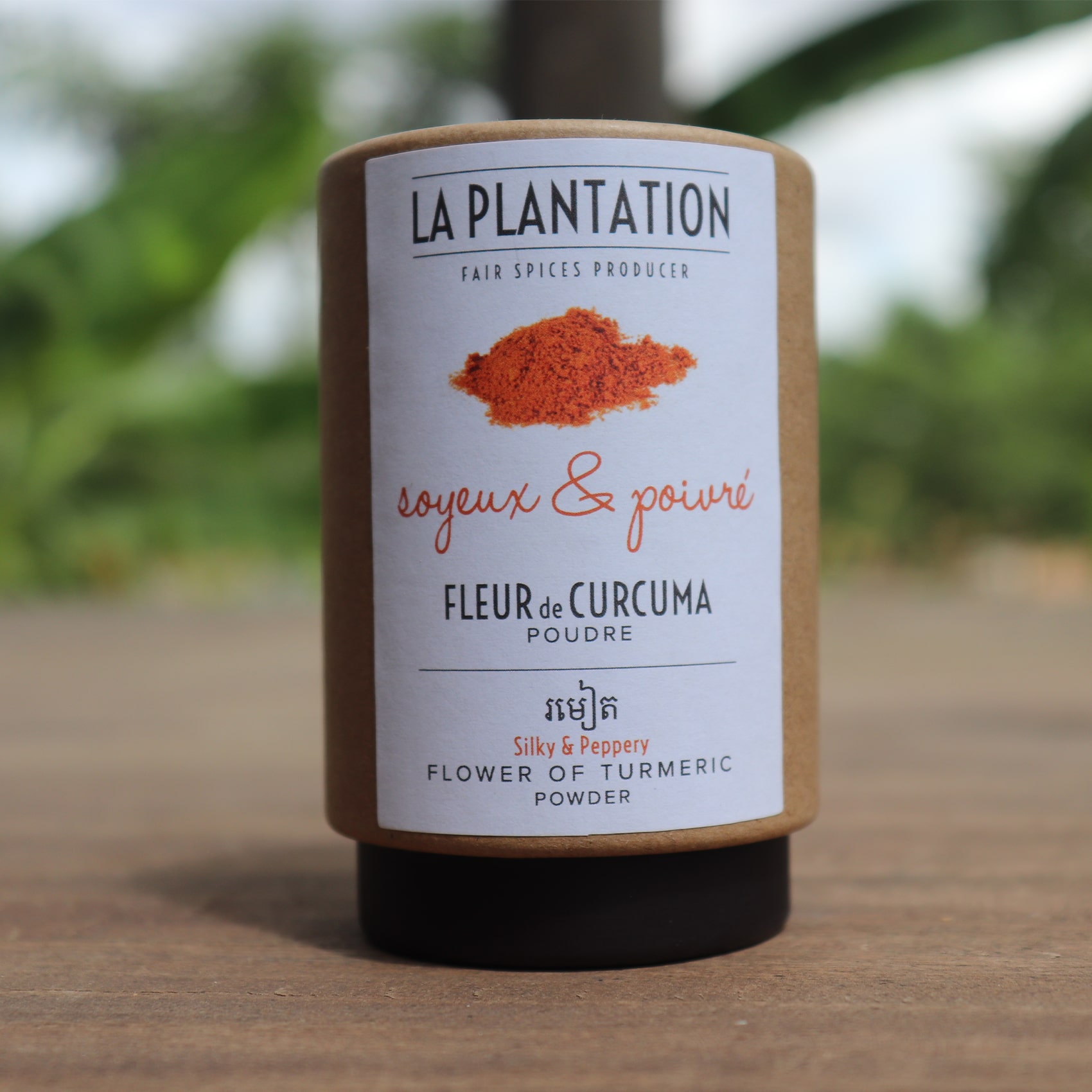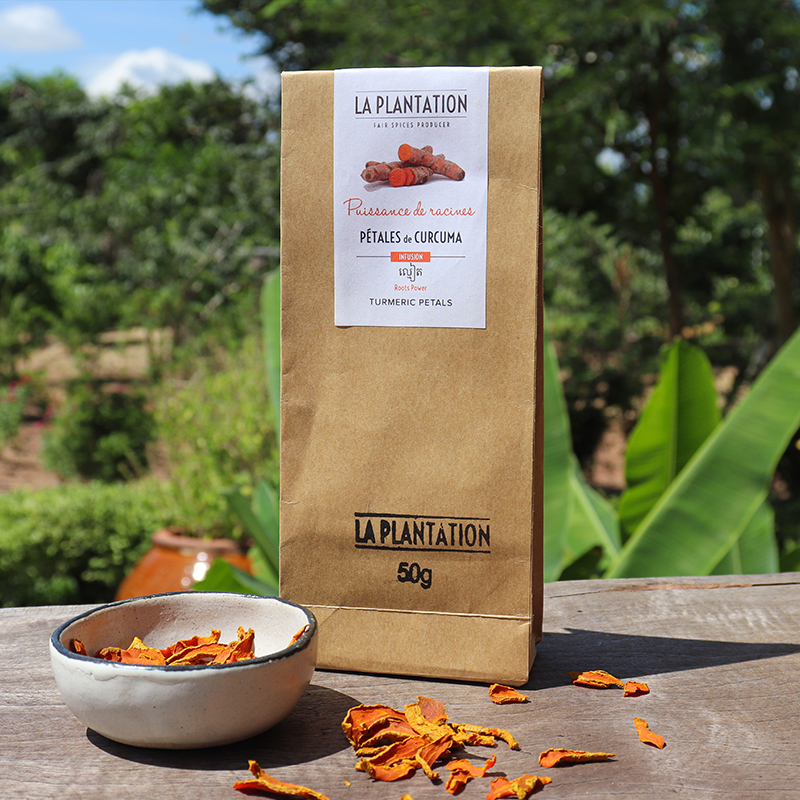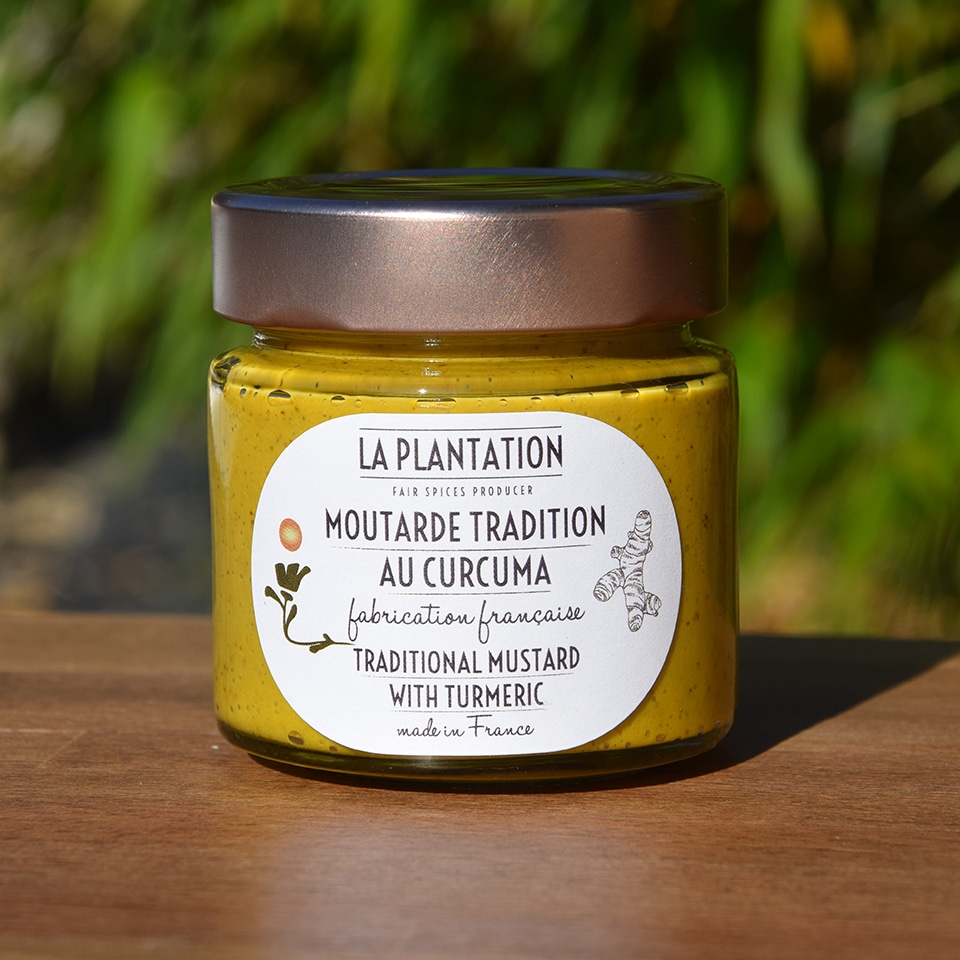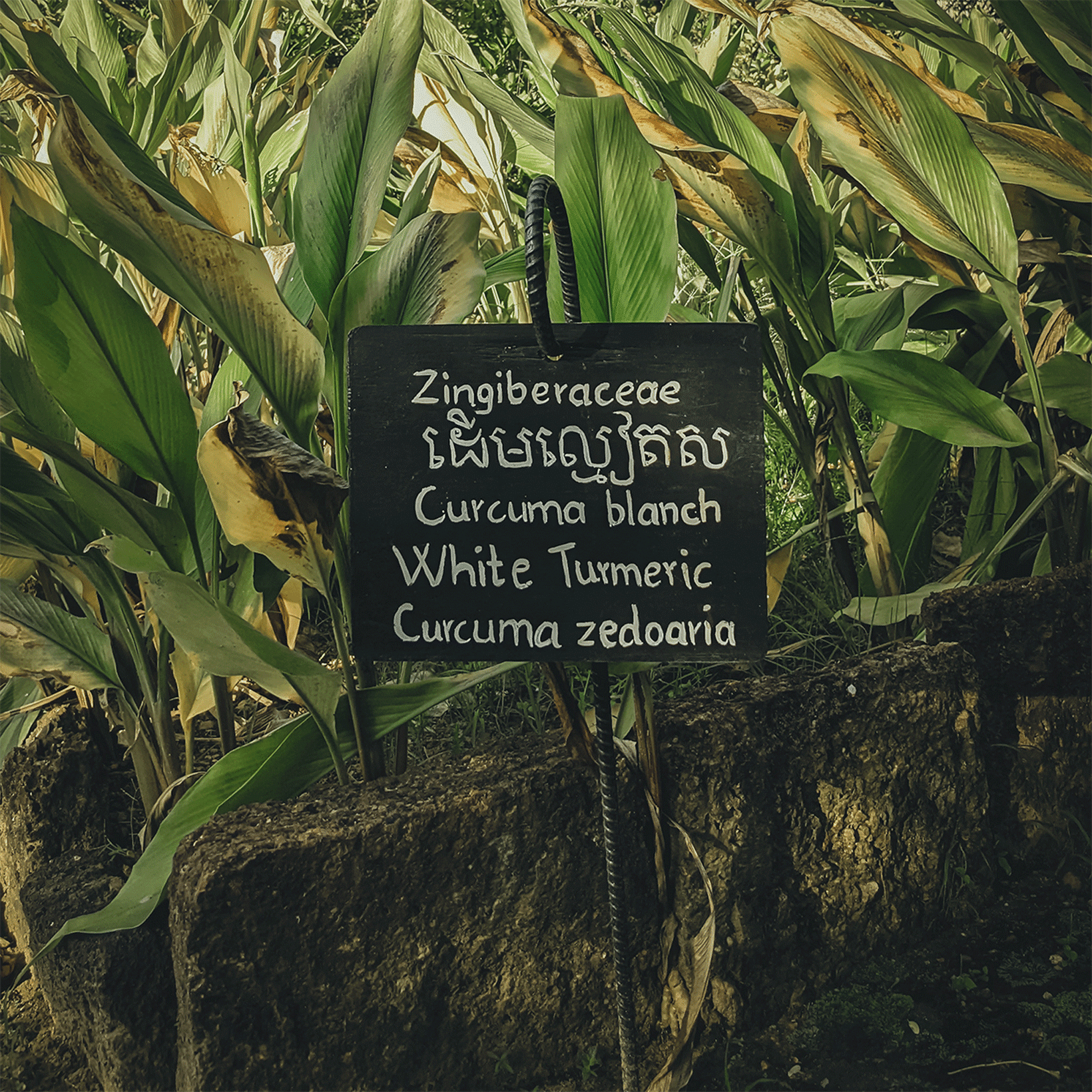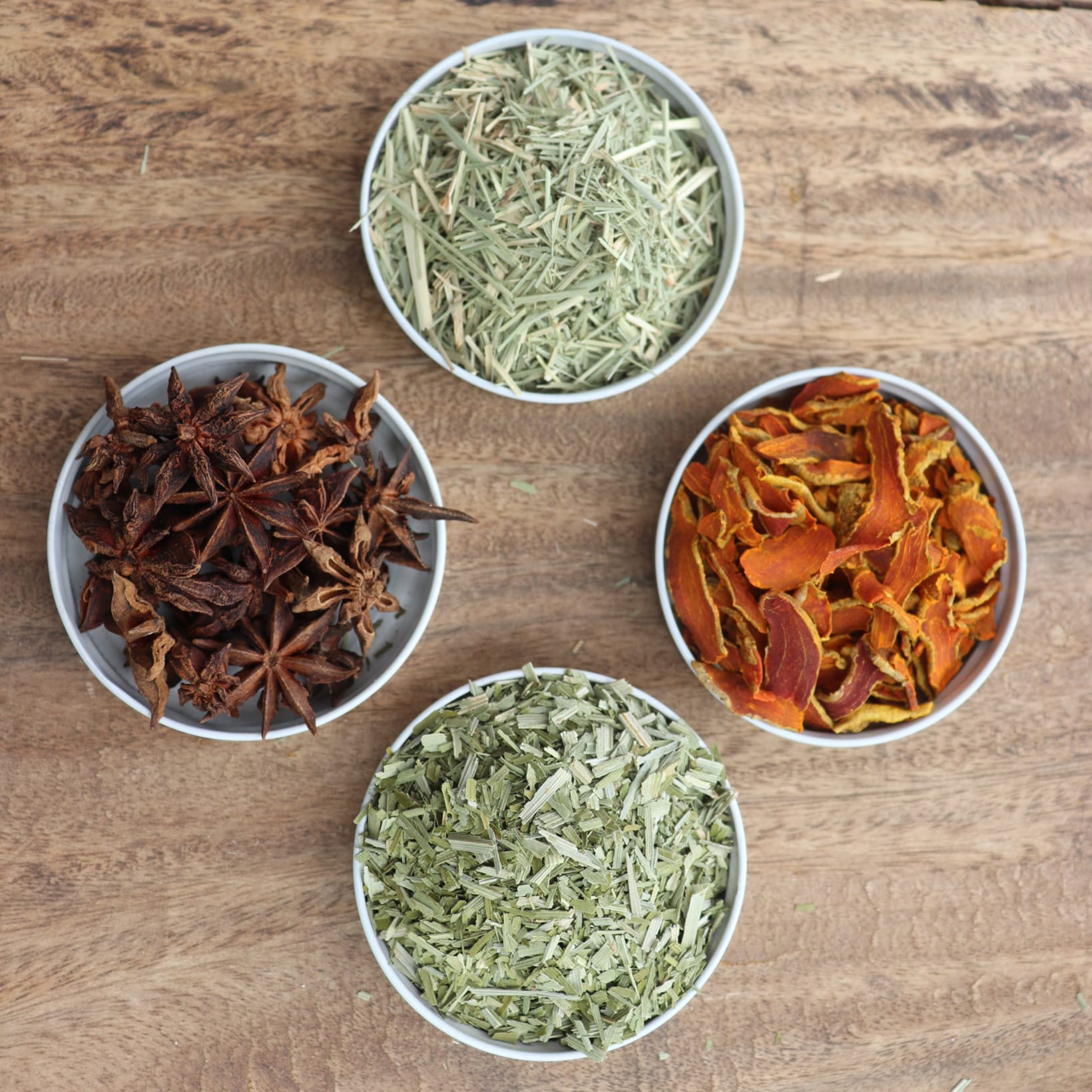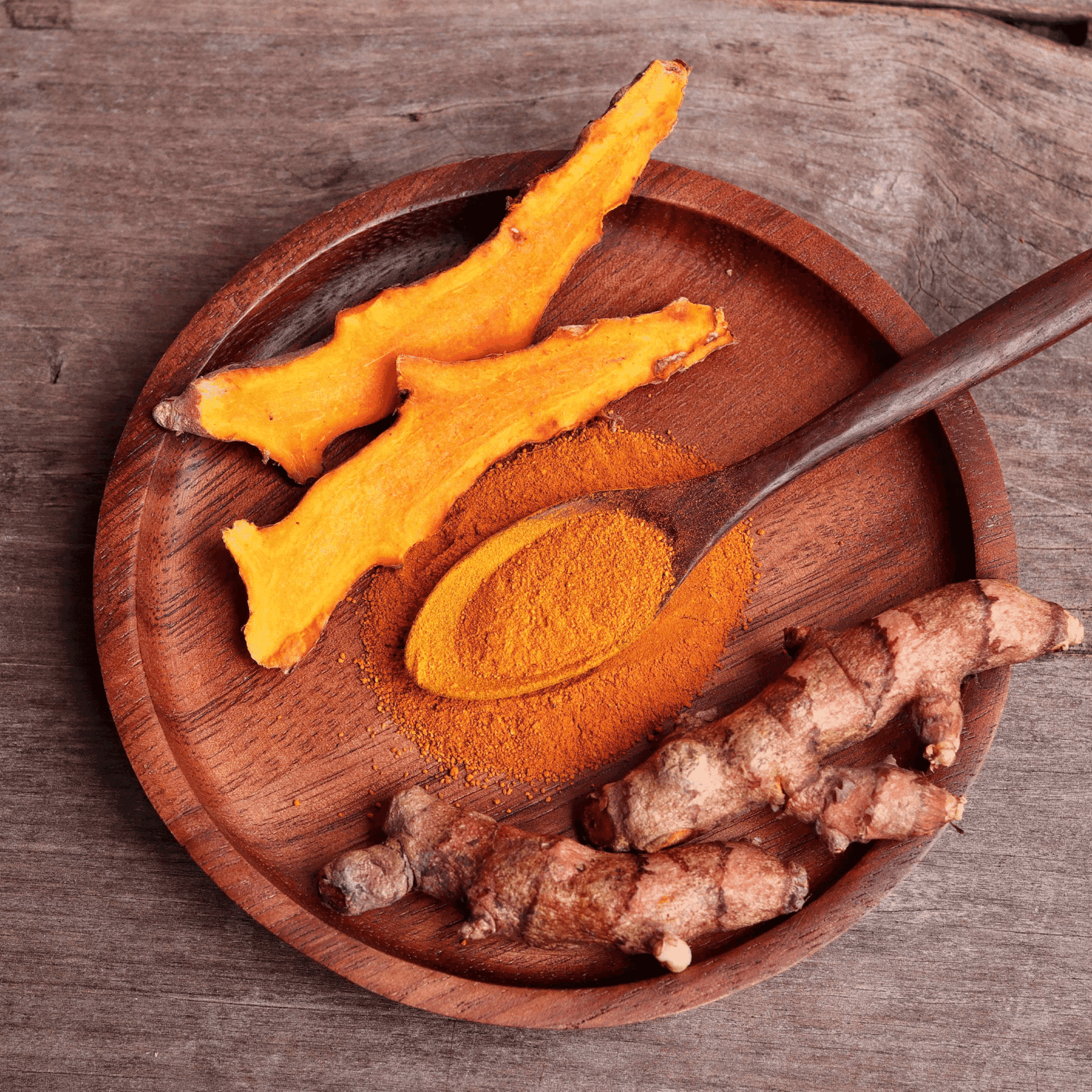
Spice of the moment: Turmeric
Sommaire
Behind its golden colour and earthy aroma lies an ancient story — that of a root cultivated for centuries for its natural benefits and unique flavour.
In Kampot, southern Cambodia, La Plantation keeps this tradition alive by growing organic, ethical, and fair-trade turmeric, hand-harvested and sun-dried. Every step is done with care to preserve the freshness, aroma, and power of this exceptional root.
Recognisable by its bright orange colour, turmeric is rich in curcumin, the active compound known for its health benefits. Antioxidant, anti-inflammatory, and naturally energising, turmeric is now appreciated as much in cooking as in wellness.
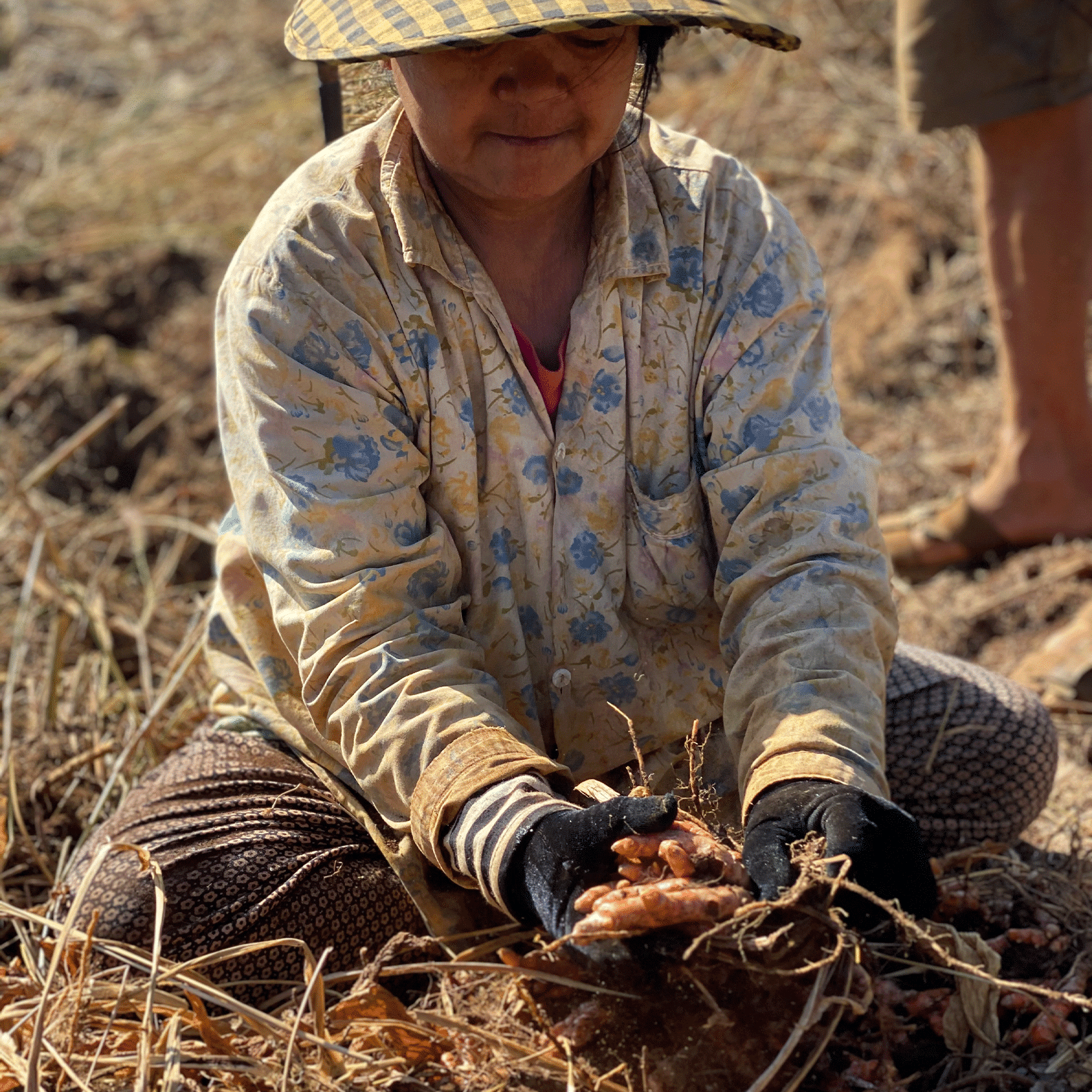
What is turmeric?
Turmeric is a root — more precisely, an underground rhizome — that belongs to the same family as ginger. Beneath its thin skin lies a vibrant orange flesh, rich in curcumin, the natural pigment that gives turmeric its distinctive colour and properties.
Turmeric around the world
Used for over 4,000 years in South and Southeast Asia, turmeric has long been part of local culinary and medicinal traditions, particularly in India, China, and Indonesia.
There are more than 110 species of turmeric, but Curcuma longa is the most common and commercially cultivated variety. Over three-quarters of the world’s production takes place in India.
Throughout history, people living along ancient trade routes between East and West learned to integrate turmeric into their food, traditional medicine, and rituals.
In Cambodia, many families still grow turmeric in their gardens, using it for both healing and cooking. In the kitchen, it adds a warm, peppery note to dishes; in Ayurvedic medicine, it is known for its cleansing and anti-inflammatory properties.
| Did you know? In Cambodia, women traditionally apply a paste made from turmeric on their skin after childbirth to help it regain elasticity. |
Difference between orange and white turmeric
Orange turmeric, our main variety, is the richest in curcumin and offers the most powerful benefits. It is valued for its antioxidant, digestive, and anti-inflammatory properties.
White turmeric (Curcuma zedoaria) has a softer, more citrusy aroma, making it ideal for infusions, desserts, or cocktails. Its flavour is closer to ginger, with a delicate, floral finish.
Origin and characteristics of La Plantation turmeric
Grown under banana trees in Kampot, southern Cambodia, our turmeric thrives in a balanced, fertile ecosystem. Cultivated through agroforestry, it grows in partial shade, in clay-rich, organic soil that preserves biodiversity and produces roots high in curcumin and essential oils.
Harvesting takes place between December and January, when the leaves begin to dry. The rhizomes are harvested by hand, then washed, sliced, and dried in our solar greenhouses. This gentle, UV-free drying method preserves both aroma and natural pigments.
Certified organic by Ecocert, our turmeric is grown without pesticides or chemical fertilisers, in full respect of the soil, nature, and the people who cultivate it.

The health benefits of turmeric
The following information is based on scientific studies and traditional uses of turmeric. It should be interpreted carefully.
According to European regulations on nutrition and health claims (Regulation (EC) No 1924/2006), these benefits may apply only under specific conditions of use.
Curcumin: the active compound in turmeric
Curcumin is the golden heart of turmeric. This powerful natural pigment gives the root its deep orange colour and concentrates its antioxidant and anti-inflammatory properties.
At La Plantation, our Kampot turmeric contains a high curcumin level of over 10%, two to three times higher than the market average. This makes it a premium ingredient, perfect for both cooking and well-being.
Main benefits of turmeric
Anti-inflammatory and antioxidant properties
Curcumin acts as a natural regulator of inflammation. It helps ease joint, muscle, or digestive discomfort and is a major antioxidant, protecting cells from oxidative stress.
Clinical studies show that regular turmeric consumption can help reduce the production of inflammatory molecules in the body — making it especially useful for people experiencing chronic inflammation, stress, or sport-related pain.
(Source: Burgenstein Foundation)
Supports digestion and immunity
Traditionally used to stimulate digestion, turmeric promotes bile production and helps the liver eliminate toxins.
It also contributes to immune balance by supporting gut health and microbiota diversity. Regular consumption offers a gentle tonic effect, helping the body feel lighter and more energised after meals.
Cardiovascular health support
According to research and EFSA-reviewed meta-analyses, turmeric may have potential heart health benefits:
-
improved blood circulation,
-
reduction of oxidised cholesterol levels,
-
protection against plaque build-up,
-
anti-inflammatory effects supporting blood vessels.
Scientifically studied benefits
Modern science continues to confirm the ancestral virtues of turmeric. Studies suggest that curcumin may:
-
help reduce stiffness and discomfort by regulating inflammation,
-
protect nerve cells and support memory,
-
soothe and brighten the skin when used in cosmetic care, in line with Ayurvedic tradition.
These effects are best experienced as part of a balanced diet combined with other natural ingredients.
The essential pairing: turmeric and black pepper
Turmeric and black pepper are a perfect duo. Why? Because piperine, the active compound in black pepper, increases the bioavailability of curcumin — meaning it helps the body absorb it better.
Without pepper, curcumin is quickly eliminated by the liver. With pepper, its absorption can increase up to twenty times, according to some studies.
That’s why at La Plantation, we always recommend combining organic turmeric powder with freshly ground black pepper. It’s both a flavourful and effective partnership.
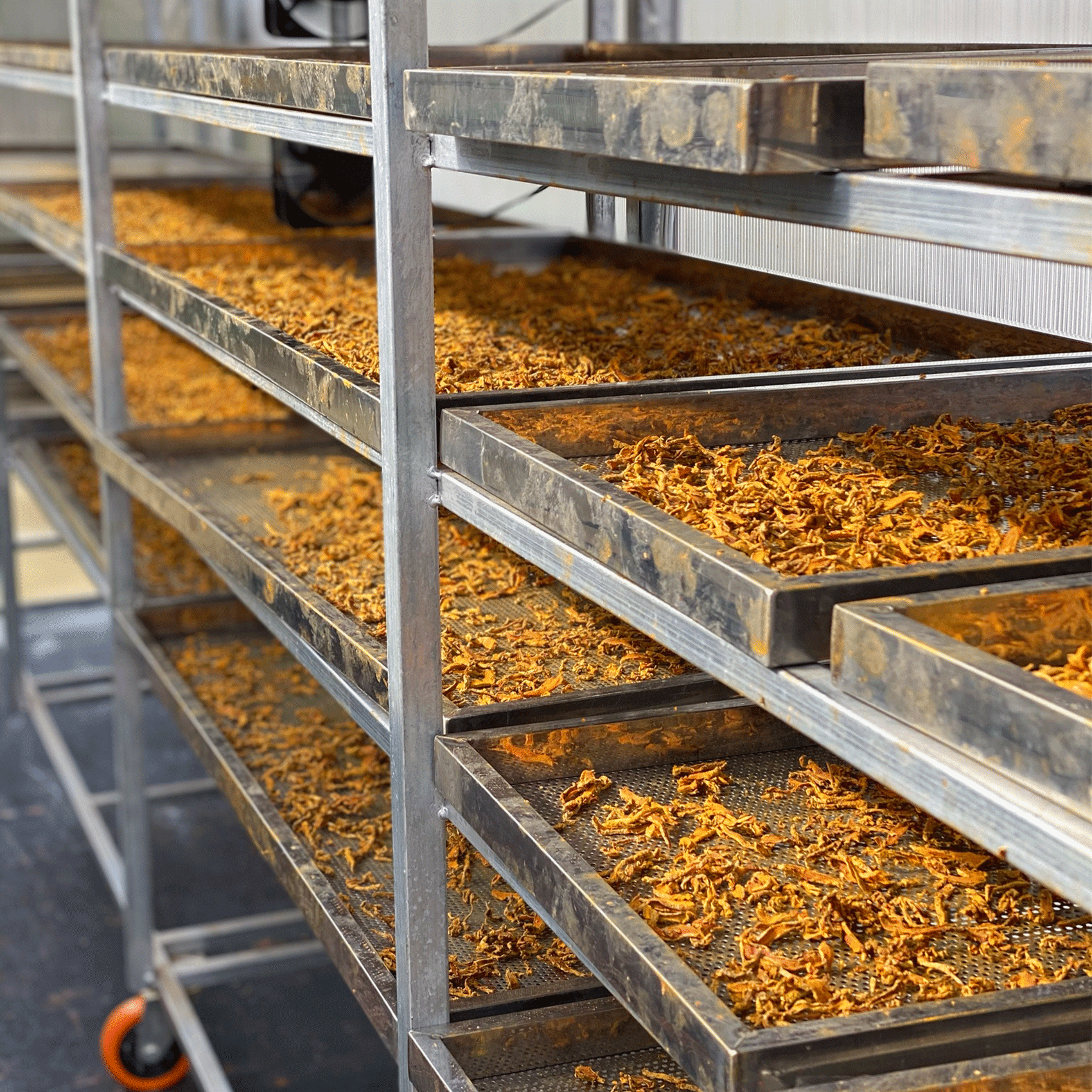
How to consume turmeric daily?
Which form of turmeric should you choose?
Turmeric is available in several forms — powder, fresh root, or dried petals — each offering its own advantages depending on how you use it.
Turmeric powder
Turmeric powder is the most common and practical form to include in your daily meals. It blends easily into dishes, sauces, or drinks such as golden milk.
At La Plantation, our powder is made from freshly harvested rhizomes, ground on the same day to preserve their aroma and nutrients.
This format is ideal for everyday use: it ensures excellent concentration of active compounds, long shelf life, and a low environmental footprint (no refrigeration or air transport).
Fresh root
Less common but available in some markets, fresh turmeric can also be used in cooking or juices. However, fresh roots transported by air lose aroma and nutrients over time.
The flavour fades quickly, and the concentration of curcumin drops after several days. That’s why freshly made powderis often the better choice — more practical, sustainable, and rich in flavour.
Dried petals or slices
At La Plantation, we also offer dehydrated turmeric petals, perfect for teas, broths, and infusions. They add both aroma and colour, while maintaining all the root’s natural richness.
Each of these forms allows you to enjoy turmeric’s full benefits without compromising on quality or ethics.
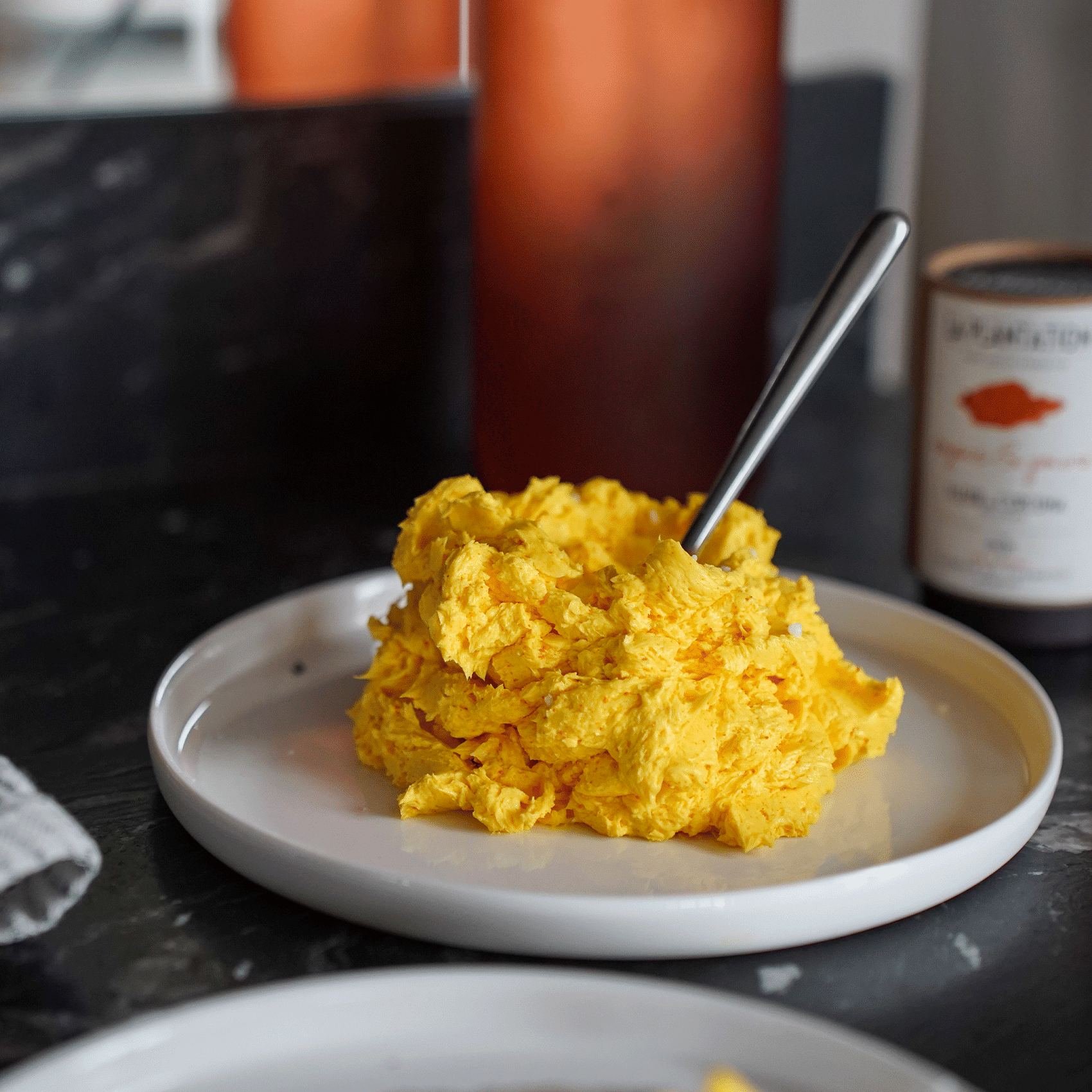
How to use turmeric powder?
Turmeric powder can be used in many creative ways, both in the kitchen and in drinks or desserts.
In cooking
Turmeric brings colour and depth to curries, soups, roasted vegetables, sauces, and stews.
Its warm, peppery flavour works beautifully in savoury dishes — but also in sweet recipes.
Try it in:
-
a pumpkin or carrot soup,
-
a marinade for roasted cauliflower,
-
or a simple vegetable stir-fry with a golden touch.
In drinks and infusions
The famous “golden milk” (or turmeric latte) combines turmeric, milk or plant-based milk, and black pepper — a comforting drink perfect for evenings.
You can also use turmeric for herbal teas, mixed with lemon or honey, or even add it to kombucha or kefir for a tangy, energising flavour.
In desserts
Turmeric adds a subtle twist to your baking:
-
try it in lemon cakes or pancakes,
-
or in energy balls with dates and nuts for a healthy, vibrant snack.
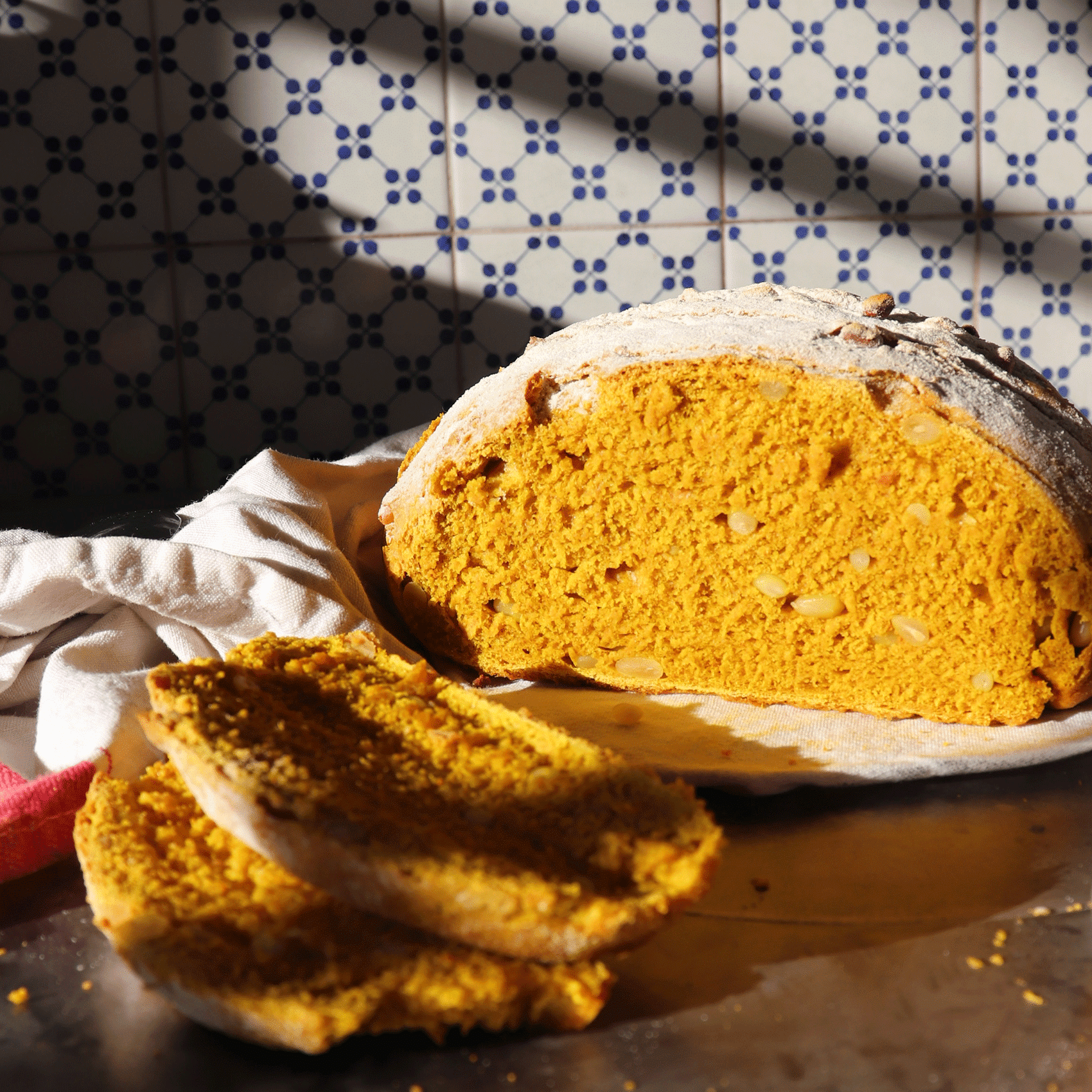
Recommended daily amount of turmeric
To enjoy its benefits safely, moderation is key.
-
Recommended dose: about 1 to 2 teaspoons of turmeric powder per day.
-
Precautions: people with gallbladder or digestive issues, or those who are pregnant, should consult a professional before regular use.
When combined with a balanced diet and black pepper, turmeric becomes a daily wellness ally — easy to include in soups, smoothies, or warm drinks.
